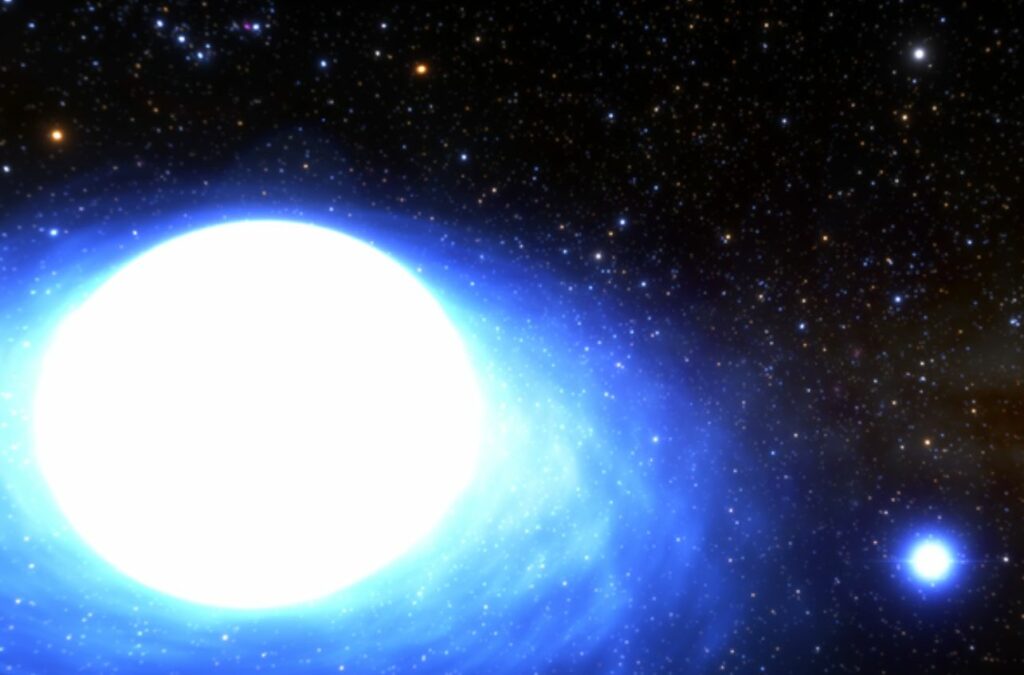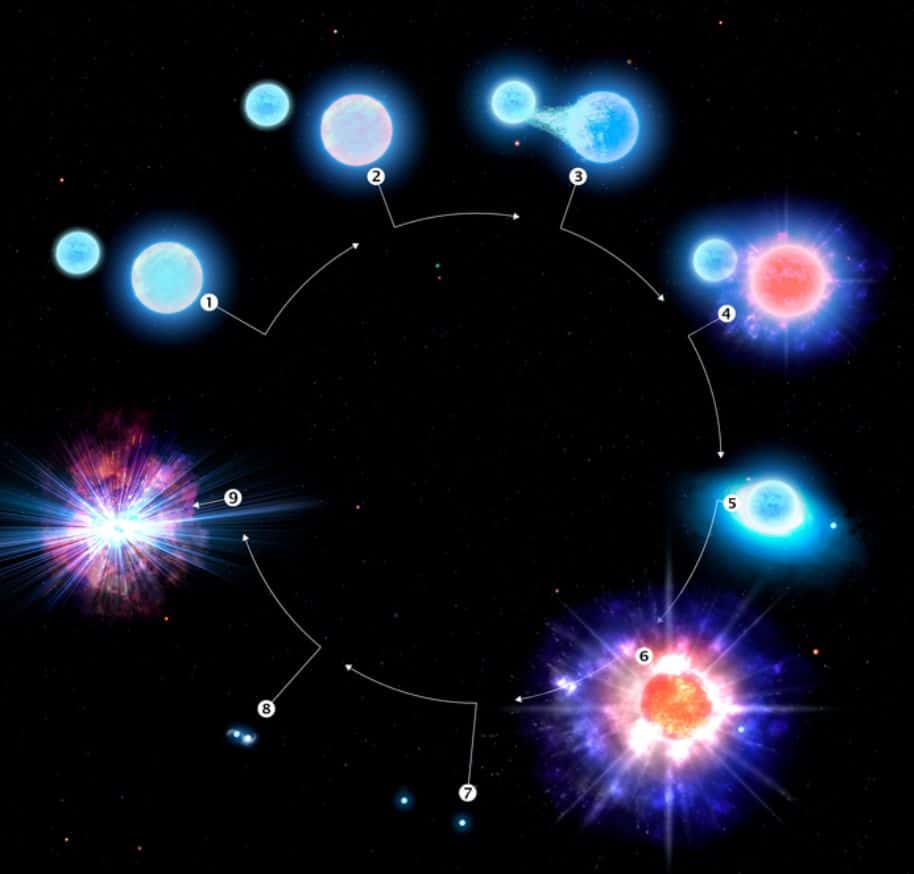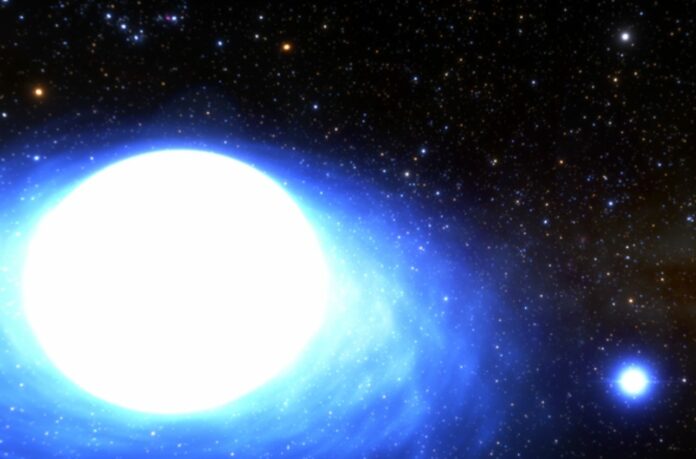This is the first example of a remarkably uncommon binary star system, possessing all the necessary conditions to induce a kilonova, a highly energetic explosion that generates gold through the collision of neutron stars.
Using the SMARTS 1.5-meter Telescope at the Cerro Tololo Inter-American Observatory in Chile, a Program of the NSF’s NOIRLab, astronomers have discovered the first instance of an extraordinarily rare type of binary star system, one that has all the necessary conditions to eventually trigger a kilonova — the ultra-powerful, gold-producing explosion caused by colliding neutron stars.
A system like this is so rare that scientists think there are only about 10 like it in the whole Milky Way Galaxy.
The findings of the study were published today in the journal Nature.
Clarissa Pavao, an undergraduate at Embry-Riddle Aeronautical University’s Prescott, Arizona campus, submitted her preliminary analysis after analyzing a large amount of astronomy data.
Her mentor’s reaction was quick, with an all-caps response: “THERE’S AN ORBIT!”
She was shocked since she had no idea that she would soon be a part of something significant.

This strange system is about 11,400 light-years from Earth. It is called CPD-29 2176. It was discovered for the first time by NASA’s Neil Gehrels Swift Observatory.
Subsequent observations using the SMARTS 1.5-meter Telescope enabled astronomers to deduce the orbital features and the types of stars composing this system – a neutron star formed from an ultra-stripped supernova and a massive star orbiting closely that is undergoing a similar transformation.
“When we look at these objects, we’re looking backward through time,” adds Clarissa Pavao, an undergraduate at Embry-Riddle Aeronautical University’s Prescott. “We get to know more about the origins of the universe, which will tell us where our solar system is headed. As humans, we started out with the same elements as these stars.”
An ultra-stripped supernova is the final explosion of a massive star that has lost most of its outer layers due to interaction with a companion star.
Unlike more common types of supernovas, they don’t explode with enough power to “kick” a neighboring companion star out of the system.

“The current neutron star would have to form without ejecting its companion from the system. An ultra-stripped supernova is the best explanation for why these companion stars are in such a tight orbit,” explains lead author Noel D. Richardson. “To one day create a kilonova, the other star would also need to explode as an ultra-stripped supernova so the two neutron stars could eventually collide and merge.”
The discovery of kilonova progenitor systems, such as this one, may help astronomers in solving the puzzle of how kilonovae develop and give information on the genesis of the strongest elements in the Universe. It also represents the discovery of a very uncommon cosmic oddity.
“For quite some time, astronomers speculated about the exact conditions that could eventually lead to a kilonova,” adds co-author André-Nicolas Chené. “These new results demonstrate that, in at least some cases, two sibling neutron stars can merge when one of them was created without a classical supernova explosion.”
But making a system this strange is a long and unlikely process.
“We know that the Milky Way contains at least 100 billion stars and likely hundreds of billions more. This remarkable binary system is essentially a one-in-ten-billion system,” adds Chené. “Prior to our study, the estimate was that only one or two such systems should exist in a spiral galaxy like the Milky Way.”
Even though this system has everything it needs to form a kilonova in the future, it will be up to astronomers of the future to study it. The huge star will have a gigantic supernova explosion and produce a second neutron star after a minimum of one million years. The pre-existing neutron star and the newly formed stellar remnant will then need to progressively approach one another in a cosmic dance while gradually losing their orbital energy to gravitational radiation.
When they finally come together, they will explode in a kilonova that will send out much stronger gravitational waves and leave behind a lot of heavy elements like silver and gold.
“This system reveals that some neutron stars are formed with only a small supernova kick,” concludes Richardson. “As we understand the growing population of systems like CPD-29 2176 we will gain insight into how calm some stellar deaths may be and if these stars can die without traditional supernovae.”
Source: 10.1038/s41586-022-05618-9
Image Credit: NOIRLab/NSF/AURA/J. da Silva/Spaceengine
